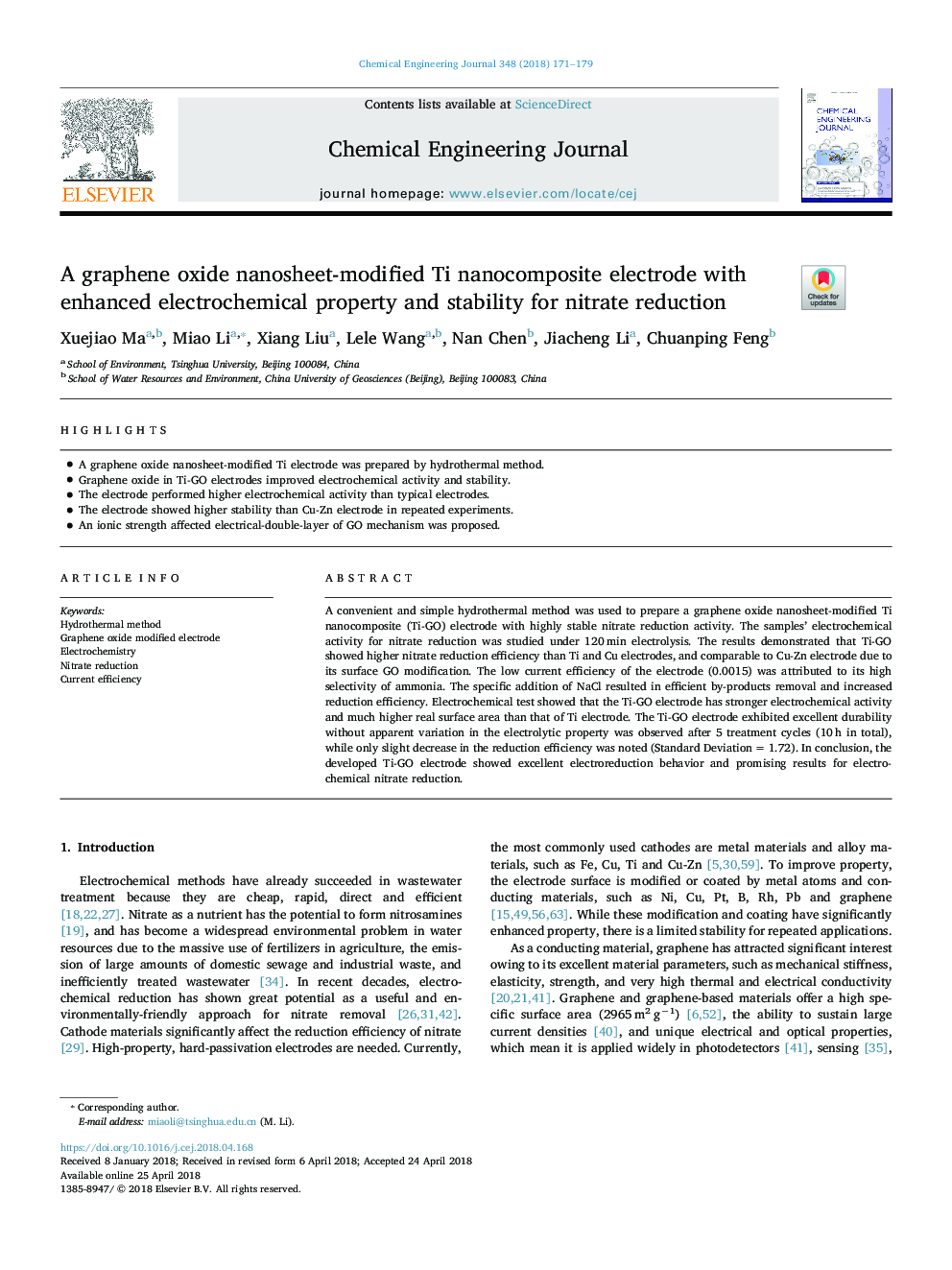| Article ID | Journal | Published Year | Pages | File Type |
|---|---|---|---|---|
| 6578824 | Chemical Engineering Journal | 2018 | 9 Pages |
Abstract
A convenient and simple hydrothermal method was used to prepare a graphene oxide nanosheet-modified Ti nanocomposite (Ti-GO) electrode with highly stable nitrate reduction activity. The samples' electrochemical activity for nitrate reduction was studied under 120â¯min electrolysis. The results demonstrated that Ti-GO showed higher nitrate reduction efficiency than Ti and Cu electrodes, and comparable to Cu-Zn electrode due to its surface GO modification. The low current efficiency of the electrode (0.0015) was attributed to its high selectivity of ammonia. The specific addition of NaCl resulted in efficient by-products removal and increased reduction efficiency. Electrochemical test showed that the Ti-GO electrode has stronger electrochemical activity and much higher real surface area than that of Ti electrode. The Ti-GO electrode exhibited excellent durability without apparent variation in the electrolytic property was observed after 5 treatment cycles (10â¯h in total), while only slight decrease in the reduction efficiency was noted (Standard Deviationâ¯=â¯1.72). In conclusion, the developed Ti-GO electrode showed excellent electroreduction behavior and promising results for electrochemical nitrate reduction.
Related Topics
Physical Sciences and Engineering
Chemical Engineering
Chemical Engineering (General)
Authors
Xuejiao Ma, Miao Li, Xiang Liu, Lele Wang, Nan Chen, Jiacheng Li, Chuanping Feng,
